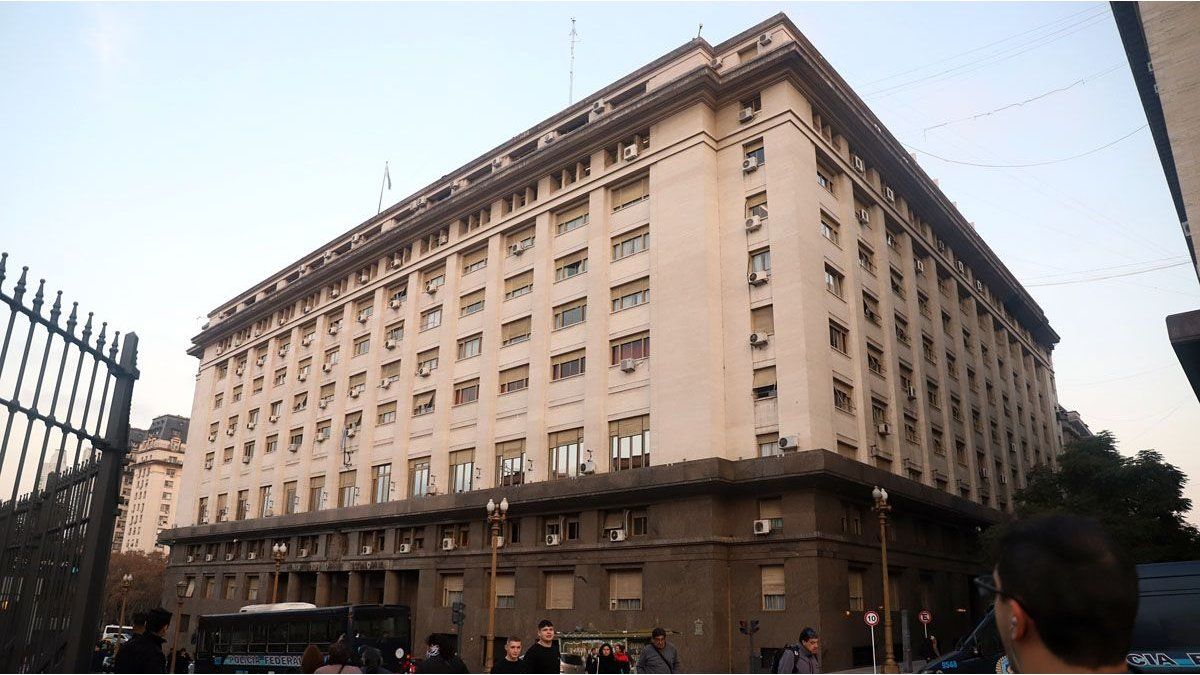“In Argentina, the strong implementation of the program is helping to restore macroeconomic stability,” says the Economic Outlook – The Americas report of the International Monetary Fund (IMF) released this Friday in Washington. From reading the document it emerges that it is the the only country in South America with a surplus in the Government accounts this year, but it is also the only one that registers a contraction in economic activity.
The document maintains that “In the first half of 2024, the authorities have achieved a fiscal surplus (the first in 16 years), have reconstituted reserves and “They have reduced inflation more quickly than expected.”
The multilateral organization’s numbers show a drop of more than 5 points of GDP in the Government’s primary spending which decreases from 35.3% last year to 30.2% at present. In this way projects a surplus equivalent to 1.8% of GDP and a higher one – 2.9% – for next year.
The Fund’s evaluation is that “signs of economic stabilization are appearing, and economic activity expanded from April, but the pace of recovery remains uncertain and unequal between sectors”.
In this context, he suggests that “To maintain progress it will be necessary for policies to continue evolving, particularly on the monetary, exchange rate and structural fronts.”
Contrary to what happens in all the countries of South America, which in all cases register economic growth For the current year, the IMF foresees a contraction of around 3.5% in Argentine GDP, but growth of around 5% is projected in 2025.
It estimates that annual inflation will end the year below 140% and decline to around 45% by the end of 2025.
Clipboard01.jpg
Weak growth
“After successfully overcoming a series of shocks, Most countries in the region (from Latin America and the Caribbean, excluding Argentina and Venezuela) are converging towards their (weak) growth potential, although from different cyclical positions,” notes the Fund. Economic expansion has moderated from 4% in 2022 to 2.6% in 2023, at a similar pace in early 2024 and is expected to be 2.2% next year.
Inflation has decreased considerably in most countriesalthough it presents a certain rigidity as a result of the dynamism of the internal labor markets. Inflation in Latin America and the Caribbean (excluding Argentina and Venezuela) is projected to gradually reduce from 4.7% at the end of 2023 to 4.3% and 3.3% at the end of 2024 and 2025, respectively.
A favorable fact for Argentina is that the forecasts for Brazil, its main trading partner in the region, have been revised upwards in view of the expected effects of structural reforms and the acceleration of hydrocarbon production.
Brazilian GDP growth is projected to remain at a solid 3% level in 2024thanks to resilient private consumption – helped by fiscal transfers and the dynamism of labor markets –, increased investment and less severe disruptions than expected due to floods.
Next year, growth is expected to moderate to 2.2% due to smaller statistical carryover effects, a still restrictive monetary policy and the expected cooling of the labor market. In the medium term, growth in Brazil is expected to increase to 2.5% thanks to favorable structural factors, including the reform of the value added tax, which represents an improvement in efficiency, and the acceleration of hydrocarbon production.
Returning to the region, the Fund warns that Inflation risks remain skewed to the upside and they arise from the tightness of the labor market, the persistent inflation of services, the incomplete anchoring of expectations and the possibility of a relaxation of fiscal policy.
Given that the output and inflation gaps have largely closed, but monetary policy remains contractionary and public finances must be strengthened, the agency believes that it is necessary recalibrate the policy mix.
In this regard, it recommends that Fiscal consolidation, with an emphasis on increasing income, must advance without delay in order to rebuild the margins for maneuver, while protecting priority public investment and social spending.
This would contribute to the normalization of monetary policy and to strengthening the credibility and resilience of policy frameworks. It is considered that most central banks are in a position to proceed with monetary easingbalancing avoiding the resurgence of price pressures and avoiding excessive economic contraction.
Medium-term growth prospects for Latin America and the Caribbean (excluding Argentina and Venezuela) remain weak, with output projected to expand around 2.5% annually over the next five years.in line with the region’s meager historical average, and low compared to other emerging market economies. This meager projection is due to “persistent unresolved problems, such as low investment and low productivity growth, to which will be added the change in demographic dynamics.”
Vicious circle
The Fund considers “worrying that the ongoing reform agenda is limited, which could lead to a vicious cycle of low growth, social unrest and populist policies”. To avoid this, it is necessary to advance with reforms that promote all the engines of growth.. Improving governance – by strengthening the rule of law, improving government effectiveness and fighting crime – is a priority that covers all areas of growth.
To promote the accumulation of capital he affirms that it is necessary improve the business environment, encourage competition and promote international trade. He also considers it necessary expand public investment and make it more effective. To maintain a dynamic workforce and boost productivity, it is necessary to address informality and make formal labor markets more flexible so that, among other things, they can adapt to new technologies.
The document maintains that the Growing women’s participation in the labor market can also help increase the workforce and counteract demographic changes.
Likewise, consider that Policies to address climate change and embrace the energy transition are increasingly importantalthough to take advantage of the benefits of this transformation it is necessary to strengthen investment frameworks in order to attract capital and, at the same time, increase income from natural resources to meet social and public investment needs.
Source: Ambito




